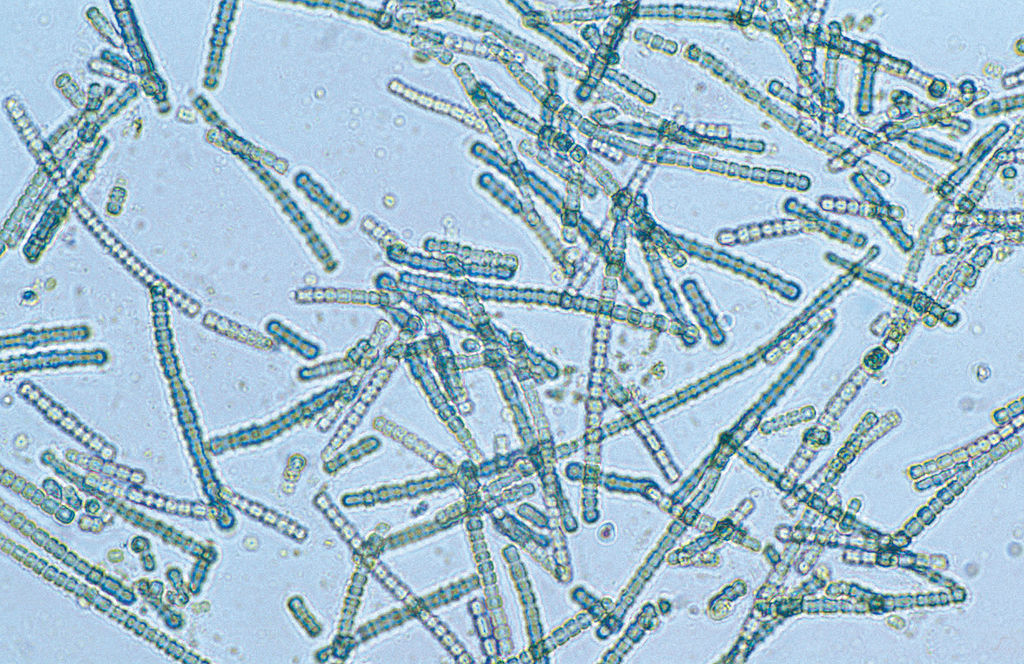Organic material on planet Mars is an interesting thing. The organic material can mean life's building blocks, like amino acids. And that makes life possible. But before we say that we found life on Mars, the researchers must know exactly what they found. The organic material can come to Mars with meteorites quite a short time ago. It can travel to Mars with badly sterilized probes.
Or it can travel from Earth. In theories the planet Mars was quite similar to Earth in its past. Then meteorite impacts throw its mantle into space. And maybe those cosmic catastrophes in the young solar system pushed Mars away from its original position. When we see films where some kind of dinosaurs flew in the Mars atmosphere, we can say that those things are overestimated.
There were no dinosaurs on Mars. But it's possible. That primitive bacteria lived in the sea that covered the red planet a long time ago. Maybe those bacteria were some kind of cyanobacteria. But then meteorites and possibly one larger particle impact destroyed the planet's bright future.
Exciting rock studied by Perseverance. (Image credit: NASA/JPL-Caltech/MSSS)
Cyanobacteria is the bacteria type that makes similar chains as researchers found in the Antarctic meteorite, whose origin is on planet Mars. Cyanobacteria also make similar structures that Perseverance found on Mars. That thing is an interesting detail in the series of cases, where researchers almost found bacteria on Mars.
But are those structures that Persevenrance found some kind of bacteria remnants? Or are they formed for some other reasons? In some of the most exciting models, those bacteria are the last of the Martian ancient bacteria that were destroyed in the cosmic catastrophe. But the exciting thing is that: the five of those structures seem to be in line.
Some kind of droplets or some beams make those structures, and that is one of the most interesting things in those structures. The thing is that if those structures are unique, that is also interesting. Can there be some space probes that are not sterilized as they should?
https://scitechdaily.com/isotopic-analysis-reveals-origins-of-organic-matter-in-martian-sediments/
https://scitechdaily.com/lifes-origins-on-mars-nasas-curiosity-rover-finds-smoking-gun-in-organic-material/
https://www.space.com/33690-allen-hills-mars-meteorite-alien-life-20-years.html
https://www.space.com/mars-rover-perseverance-possible-biosignature-astrobiologist-interview
https://en.wikipedia.org/wiki/Cyanobacteria
Both appendices are direct quotes from: https://scitechdaily.com/lifes-origins-on-mars-nasas-curiosity-rover-finds-smoking-gun-in-organic-material/
Appendix 1)
Extra Info: The Famous Mars Meteorite
The discovery of organic sediments on Mars with a low ratio of carbon-13 completes the puzzle of empirical evidence for the photolysis theory, since researchers already found the other part of that puzzle years ago in the famous meteorite, Allan Hills 84001. The meteorite contains carbonate with a heightened concentration of heavy carbon 13 isotopes.
Discovered in Antarctica 40 years ago by Roberta Score, the meteorite is believed to originate from the Red Planet and became particularly well known because it contains some deposits that led NASA researchers to announce in 1996 that they believed they had found traces of microscopic fossils of bacteria from Mars.
Today, the consensus is that these deposits are abiotic — that is, stemming from non-biological processes.
Appendix 2)
Extra Info: Mars, Earth, and Venus Had the Same Atmosphere
According to researchers, Earth had approximately the same atmosphere as our neighboring planets Mars and Venus billions of years ago.
When the early planets Venus, Earth, and Mars eventually formed solid surfaces, researchers believe they began to release large amounts of CO2 from extreme volcanic activity. That’s how they formed their first atmospheres with large concentrations of the gas. Oxygen had not yet become part of the atmosphere; this happened later on Earth, after the emergence of life.
The photolysis theory states that UV rays from the sun then start a chain of chemical reactions. A chain that starts with the breakdown of CO2 into carbon monoxide, which is the building block for a multitude of other chemical compounds.
Thus, with the help of the Sun, the foundation for the many carbon compounds and complex molecules we have today was formed — in the case of Earth, the foundation for life.
“Since then the fate of the three planets has been significantly different. Earth’s carbon dioxide reacted with our large amount of surface water and much of it deposited over time as carbonate rocks like limestone, leaving the atmosphere dominated by nitrogen, as we have today. Life arose, and microorganisms produced oxygen, which, among other things, created our ozone layer, while Mars and Venus still have very CO2-dominant atmospheres today,” explains Matthew Johnson.
Today, Venus has a very dense and toxic atmosphere primarily of CO2, which gives it a surface temperature of around 450 degrees Celsius.
On Mars, the atmosphere has become much thinner compared to Earth’s, and has left a desert landscape.
Both appendices are direct quotes from: https://scitechdaily.com/lifes-origins-on-mars-nasas-curiosity-rover-finds-smoking-gun-in-organic-material/
















